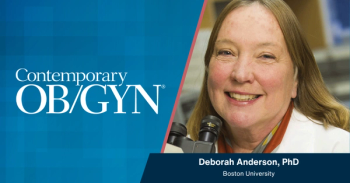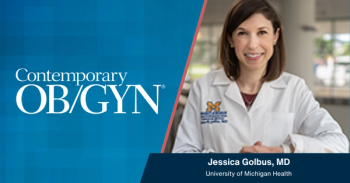
Readers react
Readers write in about their thoughts on the annual labor force survey, the conundrum presented by cesarean delivery and defensive medicine, more information on treating women who have been the victim of sexual assault, and what is adding to the stress of the job.
The cesarean conundrum
I really enjoy your journal. It focuses on clinically meaningful topics. Of course Dr Lockwood’s monthly contribution are always highly insightful and not to be missed. Something occurred to me and struck me as funny after reading the January issue of Contemporary OB/GYN. While we are struggling nationally to reduce the primary cesarean section rate the back of the issue of Contemporary OB/GYN was filled with malpractice cases that would have been avoided if cesarean sections were performed. I would like to see if Dr Lockwood would comment on the conundrum that our specialty faces.
SMFM/ACOG have redefined active labor and have extended the limit to the second stage of labor. We are under additional pressures to avoid cesarean section. In this environment there are going to be obstetricians who are going to get lost in the fervor, reducing their section number but at the cost of maternal and perinatal morbidity and mortality. The obstetrician is put in such a bad spot. The cover article “We’re only human” makes the point.
Genevieve B Sicuranza, MD, FACOG
In Reply:
Thanks for sharing your thoughts. The relationship between cesarean delivery rates and defensive medicine is certainly embedded in conventional wisdom though hard to prove statistically.
In my opinion, ob/gyns working in states without meaningful tort reform, where there is a superabundance of unscrupulous trial lawyers who perpetually bombard the media with their ads and where patient safety initiatives are impeded by the resultant culture of secrecy and lack of transparency, are far more likely to engage in defensive medical practices and thus, have higher cesarean rates. Conversely, I would opine that those working in states with just and equitable professional liability laws, fewer and more ethical trial lawyers and a culture of transparency and pro-active approaches to patient safety will likely have lower caesarean delivery rates. But these are opinions, no one could argue that we should all toil ceaselessly to create to try and create that better environment. That means getting involved with local ACOG districts and state and county medical associations to support tort reform while working to create strong patient safety cultures in our practices and hospitals. The latter includes employing evidenced-based approaches to care, implementing proven patient safety measures (eg, team training, structured hand-offs, checklists, clinical guidelines, FHR certification, etc.), keeping our medical knowledge current and our surgical skills honed.
Charles J Lockwood, MD, MHCM
Insurance companies add to ob/gyn stress
Quite an interesting article about
Being in private, solo practice since 2003 has been both rewarding and burdensome at times. EHR and the flood of requirements (Meaningful Use and the like) are the biggest burden for a solo practitioner. Add to that the fact that insurance companies think that the only thing we have to do is push papers for the most ridiculous reasons, and it pushes me to throw in the towel.
And no, as stressful as it might be, it is not the hours of work in the hospital. I can see myself becoming a laborist, work a shift and then go home, but the multiple hurdles one has to go over to just provide appropriate care.
Multiple examples of the lack of rationale on the insurance companies can be listed, as a couple of examples, a gestational diabetic patient whose insurance requires me to “pre-authorize” her reactive strips so she can self-monitor her glycemias; the patient with menorrhagia, at age 35, with a tubal ligation, who is requesting an endometrial ablation and whose insurance denies it because “it is standard to try other ways of controlling her bleeding” even when I made them aware that patient declines use of hormonal therapy and that she is no longer interested in childbearing.
And I could go on. Insurance companies have this disdain for the physician time to even request “pre-authorization” for prenatal vitamins! They pretend that we all should learn or memorize or consult their particular drug formulary or that we should be knowledgeable about the 30 different programs they offer so we can manage each patient depending on the particular program she is enrolled in.
I wish there could be a standardization on everything: EHR, insurance requirements. I wish I did not have to hire 3 people just to handle billing and, more importantly, I wish I did not have to deal with the multiple hurdles the insurance companies throw at us in an effort to satisfy the salaries of their CEOs.
Tomas A Hernandez-Mejia, MD, FACOG
Pasco, Washington
In Reply:
Thank you for writing. I believe all our readers feel the exact same way. Simplification of insurance processes and paperwork would go a very long way to “de-stressing” our field. As the new HHS secretary was an actual practicing physician we can only hope he has our back in this regard.
Charles J Lockwood, MD, MHCM
More steps to take after sexual assault
Regarding “After a sexual assault: What to do?” [December 2016 Contemporary OB/GYN]
Reporting to police
The authors state, “Less than 25% or as few as 10% of cases ever come to the attention of police.” It is better to use recent statistics from sources such as the FBI’s “Crime in the United States” (2014), or Uniform Crime Reports, rather than references 3 and 4. The credibility of this article would be enhanced if the authors regularly conducted forensic medical exams as do forensic medical examiners/ SANEs.
First interface with a survivor
The authors state, “healthcare providers likely care for a small fraction of sexual assault (SA) survivors” Ob/gyn providers may actually care for many SA survivors, but patients likely will not disclose the history of assault until asked. Later in the article it states, “it is our responsibility to screen for assault.” I would emphasize that this must be asked before the physical exam. Early disclosure allows for speedy referral to appropriate providers and prevents an ob/gyn from starting an exam that risks the loss of DNA evidence or dilution of DNA with lubricant. Furthermore, defense attorneys sometimes claim that speculum insertion causes injury. It is tough to argue the possibility that a speculum didn’t cause injury. The defense may ask, “Did you ever cause injury with the speculum?” It is best to screen patients for sexual assault prior to even “taking a look.”
Emergency department forensic care
The authors state, “Most women who seek medical care do so in the ED, which tends to be best equipped to handle such situations.”
Although patients often do seek care in the ED, that may not be best for the patient or for the ED. Rarely do patients who have had a sexual assault require emergent care (Linden NEJM). Most have no injury or minor injuries such as bruises and scratches which do not require suturing and therefore are well cared for in a clinic setting. Strangulation victims may need imaging.
The ED setting also may be humiliating for sexual assault victims, since they may interface with 5 to 6 staff members, who all learn the painful patient history. The patient may be made to change into a gown at the loss of evidence on her clothing. Because SA survivors are attended by police, it is not unusual for such a patient to feel like she is a criminal with people in the waiting room gawking at her. A private clinic setting alleviates some of these concerns.
Privacy is also a challenge because it is common for the forensic exam to be interrupted with a cursory knock and opening of the door. Or housekeeping knocks and opens the door to restock. And if there is no gyn bed, the examiner may resort to using a bedpan to get buttocks elevation.
Not all EDs have a qualified forensic examiner. In many areas there may be a single ED that has RNs with specialty forensic preparation. To find such an ED or clinic in your area, Google “sexual assault crisis center” or “RAINN” (Rape, Abuse Incest National Network). They will know the closest forensic examiner.
National standard protocol
“It is best to use pre-assembled rape kits and a collection protocol,” the authors state, claiming, “protocols vary.”
The National Protocol for Sexual Assault Medical Forensic Examinations (2013) is the standard of practice. This protocol is robust in withstanding the rigors of trial. The state forensic lab has the preassembled rape kit. Even in rural areas the state rape kit should be used and training conducted to certify a staff member. Training is available online through the International Association of Forensic Nurses (IAFN) for $350-$500.
Evidence as a priority
“If the case is reported to the police … collection can serve as evidence.”
Whether the police are involved or the survivor chooses the “nonreporting” option (without police involvement), gathering specimens for potential DNA, and documenting and treating injury are the forensic medical goals. The forensic specimens should be the same regardless of whether the patient involved the police. The non-reporting specimen kits are held for years in chain of custody, in case the SA survivor chooses to make a report.
Barbara Girardin, PhD, WHNP, Advanced Forensic Nurse
Chesapeake, Virginia
Reader survey reveals important info
Thank you for publishing the results of the second annual survey
I’m happy to see that so many of the respondents were in my age category (65+) and practicing in communities other than academic medicine. Furthermore, if we add the prior group of 60+ respondents, we see that more than 50% of respondents have been practicing our specialty for a long time and have seen the various changes over decades. This validates the subject matter making the excellent and insightful comments believable.
Many messages can be teased and/or inferred from the comments. I agree with all of them. One of the most important is this: The current state of our specialty is in disarray. We have an identity crisis, which explains why there is much confusion as to what we are, what we are supposed to do and worse yet, what skills we teach and what type of practice we train our residents for. With more than 50% of all ob/gyn residents female, the worktime equation favors practice styles best suited for personal needs and not necessarily those of the public health manpower or population health. Also, the economics of educating and training physicians who will have shorter careers must be considered as we move forward to meet the needs of our communities. This is not to disparage nor to discourage females from entering the specialty. Female physicians add a new and much-desired dimension to the practice of medicine but we cannot dismiss the realities of a changing culture and must respond accordingly.
It is also clear we have made no progress on the problems of the practice of Ob that are unique to this country. We spend far too much time worrying about practicing defensive medicine to avoid medico-legal issues. I totally agree with one respondent who said, “Malpractice risk is tied to outcome and not evidence-based care.” This is more relevant to Ob than any other specialty. This sentence should be codified by every state legislature and posted on all maternity units. At the core is that while we may improve patient care by improving patient safety and by practicing evidence-based care, in Ob practice, the very fact that the positive predictive value antenatal testing plus the dearth of strategies to either prevent of treat many common conditions, has set us up to be the unwitting victims for which there is yet no solution. In this regard, organized medicine has failed to advocate for our specialty by shining the light of reality on our lawmakers and by educating the public that there we cannot prevent every maloccurrence.
It was not clear the percentages of respondents are in traditional private practice vs hospital-employed OBG vs Hospitalist vs Laborist vs academic. In other words, it’s important to gauge the economic factors that drive practice styles. That said, it is a foregone conclusion that, for the most part, traditional private practice is unsustainable due to prohibitive overhead costs relative to reimbursement and regulation. So, what will the future hold?
Armando Russo, MD, FACOG, CPE
Vineland, New Jersey
Newsletter
Get the latest clinical updates, case studies, and expert commentary in obstetric and gynecologic care. Sign up now to stay informed.
















